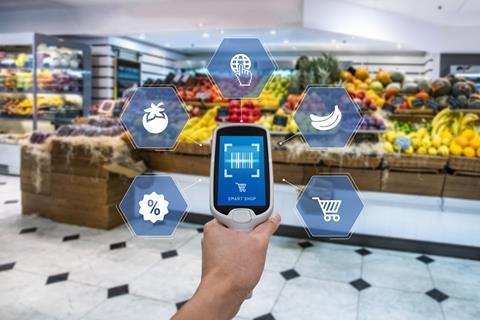
If mobile shopping transformed the grocery experience, just wait until the screen disappears altogether.
We’re entering a new era of retail. Consumers no longer browse or tap. They speak, gesture, and let AI do the thinking. From smart fridges that reorder milk to voice assistants that build your weekly shop, screenless commerce is becoming the default. Amazon’s continued investment in Alexa-enabled grocery reordering, and Walmart’s recent expansion of voice-led shopping, suggest the future is already here.
Gen Z and Gen Alpha are leading this shift. Their digital expectations are shaped by conversational tools, not search bars or dropdowns. And that has consequences for how grocery works.
Because it’s reshaping how people make decisions. Instead of comparing products on a shelf or reading labels online, shoppers now ask open-ended questions like “what should I cook tonight?” or “what goes with salmon?” The interface disappears. And with it, the brand’s last chance to interrupt the path to purchase. What gets selected is often what gets suggested, not necessarily what gets searched.
A reckoning for grocery
And that’s where grocery faces a reckoning. So much of retail still assumes the shopper is looking. The entire system – shelf presence, pack design, point of sale – relies on being seen. In a screenless, AI-assisted world, there’s no shelf to stand out on. No scroll to interrupt. Just the default setting: the item remembered by an algorithm, automatically picked by a smart assistant or added invisibly by automation.
Some brands are starting to adapt. Instacart’s AI-powered search tool builds baskets from prompts. Alexa suggests grocery items when it detects you’re running low. Walmart’s investment in voice-led shopping bypasses visual selection altogether. These are no longer experiments. They’re fast becoming everyday behaviours.
Yet many in grocery are still optimising for the wrong environment. Pack design and paid placements still dominate, while the data and infrastructure that power discoverability in ambient systems are often overlooked.
This isn’t just a shift in interface, it’s a shift in infrastructure. If a product isn’t easily identified by voice, clearly tagged with machine-readable data, or semantically structured for AI selection, it may simply be left out.
We’re entering a world where the most valuable grocery brands won’t be the ones with the best ads. They’ll be the ones that are assumed. The ones added to the basket week after week without a single click.
Because it’s not just the checkout that’s disappearing. It’s the entire path to it.
Donna Buckingham, head of client management, Cheil UK



















No comments yet